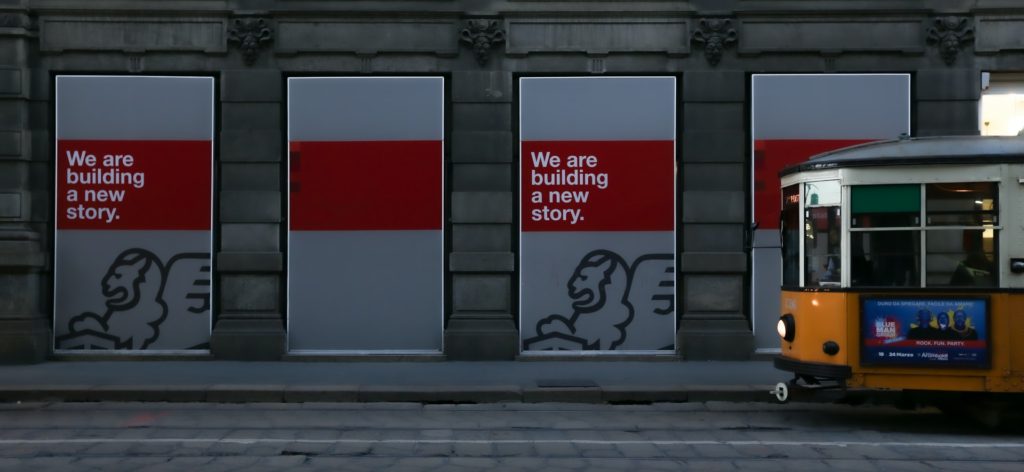Storytelling is currently experiencing a corporate renaissance through business, social media, social entrepreneurship, and executive communications. Because storytelling is much bigger than marketing itself, it’s the foundation upon which a company communicates who they are and what they stand for.

By telling original stories, you are creating unique material. Even if your post talks about a worn-out topic or something that’s considered general knowledge, this content is still addressing a unique perspective: yours.
“Even if your post talks about a worn-out topic or something that’s considered general knowledge, this content is still addressing a unique perspective: yours”
Storytelling has always been a widely used technique in traditional marketing. Now that communication with audiences is mainly online, storytelling fits like a glove. It’s the perfect medium to appeal to people’s emotional side, thus generating the relationship of trust and loyalty that all brands seek.
You want to get to know your users a little more every day through the unique emotional connection that lights up when you tell a story. For this, storytelling is the best tool. Because the goal that we aim for when using storytelling techniques is to generate a relationship beyond the mere transmission of a message.
We have carried out our due diligence by interviewing fellow storytellers and marketing executives, among other professionals. Thus, we can say that we have a good idea of where storytelling is headed. It’s all about stepping out of your comfort zone, enabling others, and having a social change component.
Dig a little deeper
Instead, many companies would rather share what we call “light stories” or stories that are very superficial and business-oriented. Your narrative should go beyond that if you want it to be more effective. Instead, try focusing on the needs we all have as human beings.
“Modern business storytelling, one that is successful and sustainable, must dig deeper. It must be more vulnerable, real, and forget about perfect endings”
Modern business storytelling, one that is successful and sustainable, must dig deeper. It must be more vulnerable, real, and forget about perfect endings. Let’s save those flawless stories for fairy tales! Like people, stories are not always ideal, and that’s okay because they’re real. Remember that a deeper emotional connection will give that story the boost it needs.
Social change component
Business storytelling today must have a more significant social change component. Storytelling must be larger than the company itself! The latter is, to some extent, due to a generational shift. Specifically, Millennials want to relate and do business with companies that care about causes that have social impact. But not just millennials, most humans are interested in these kinds of reasons, and they make decisions based on social issues.
“Companies should not only care about their customers and their economic situation. They must also be able to tell transparent stories about their mission and how it affects society”
Therefore, companies should not only care about their customers and their economic situation. They must also be able to tell transparent stories about their mission and how it affects society. The best companies, fortunately, are always about much more than profit. It’s time to communicate this through your narrative.
It’s okay to get personal
Do you know why many different brand stories have a hard time capturing prospects’ imaginations? Because they are still very focused on the company being the hero. We should not portray the company as a hero! People don’t care about companies; they care about people! Hugging or thanking a company is impossible (even though you may have wanted to smack more than one). The bottom line is, it’s difficult for your potential customers to get caught up in a story about a faceless organization.

Compelling storytelling must look through a person’s lens—for example, a particular customer, an avid employee, or a very committed partner. To sum up, each of the stories your company shares must have a personal point of view. Tell your stories through real people, and you will see a big difference.
Start to co-create
In a not too distant future, clients will play an essential role in telling credible stories. The best brands already do this, it’s time for the rest to catch up. Users can create some excellent content too! Including audiences in your own story is a perfect way of achieving that trust you seek.
Any story must build trust
And not just the story, any brand that values its consumers must prioritize trust, especially if the goal is to preserve those leads and turn them into loyal customers. For a story to generate trust, it must first mesmerize. Once that’s ready, you have set the stage for a rewarding brand-consumer relationship.
Solve a need
Great storytelling speaks of emotional and personal values, not just rational ones. Feelings matter! Personal values have twice as much weight for a user when purchasing logical values. Keep in mind that all buyers ask themselves: “How will this improve my life?”. A true story should, therefore, solve a significant need for the buyer.
Easy to remember
The more elaborate a story is, the more complicated it is to remember. Consequently, the simpler the story, or the easier it is to remember, the better. You don’t have to create stories with too many elements. What they should have is enough force and emotional impact to leave a mark.
Improve your endings
Business storytelling must never have a weak ending. Ending with financial benefits, for example, is a terrible idea. Telling your audience that your product will save them money or time isn’t enough. Why is that? Because you are focusing on a purely rational benefit, an economic benefit. And, as we just mentioned, this has nothing to do with a personal or emotional story. This is the perfect example of a shallow message.
“What your potential clients want to know is how their lives are going to change. They want to know that there is hope and that everything will be alright”
What your potential clients want to know is how their lives are going to change. They want to know that there is hope and that everything will be alright. What can your brand do to help them feel better, recognized, appreciated, happy, and everything else every human wants?

It’s okay if your story is still open or has an unfinished ending; this equals hope. Consider a business story that invites your audiences to co-create or collaborate. Your potential customers have needs that have nothing to do with your product or service. As you already know, those needs go beyond rational or economic motives. It would be best to find out what those needs are and then tell stories that talk about them. Did your product help them achieve personal goals? How? Bring these kinds of things out into the open, remember it’s not just about your brand!
Are there different types of storytelling?
The different types of storytelling techniques that exist depend on the nature of the story you want to tell. Here are some examples:
Fiction
In this type of storytelling, we tell a story in which the narrated events are not real. We rely on made-up characters or situations to deliver our message.
Historic
For classic brands with years of experience and an excellent reputation, a story about said history is the best option. Going through your history can raise different feelings among your audience (happiness, nostalgia, etc.), which we aim for, as we’ve already mentioned.
Real purchase situations
The purpose of this type of storytelling is that we see ourselves reflected in the situations that the characters of the story experience while purchasing the product or service of the brand.
Based on brand values
For this type of storytelling to work, the story’s main character needs to incarnate the brand’s values that support your message. This type of storytelling’s primary goal is for the consumer to relate to the character’s personality; in other words, the brand’s personality.











